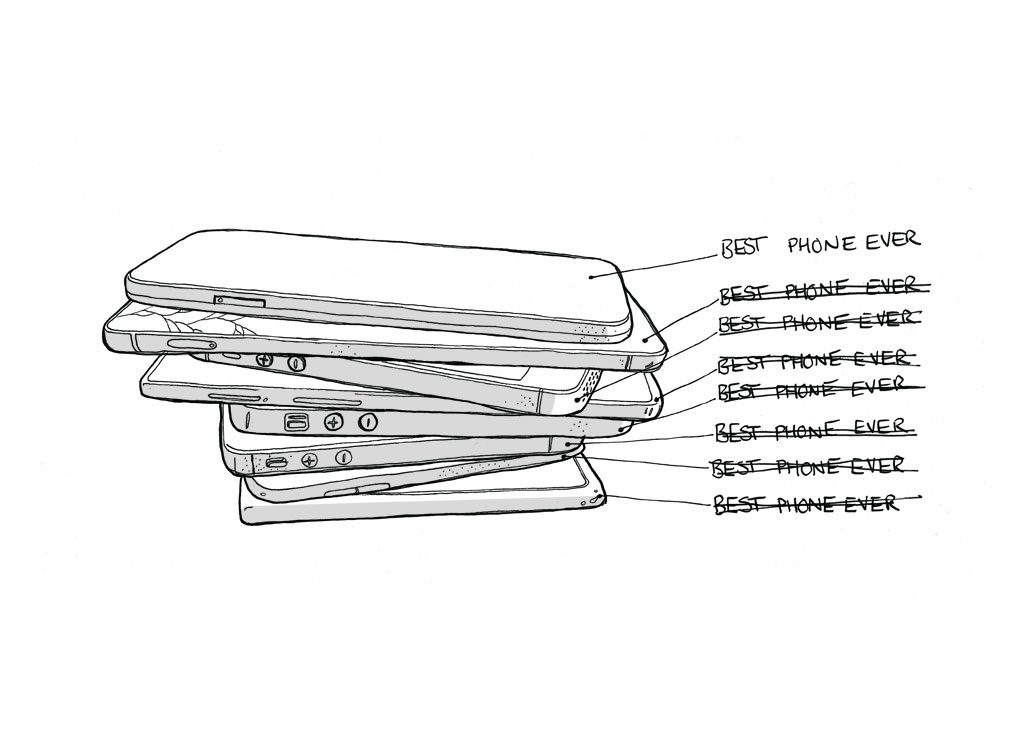Or how the observations of mundane technological glitches and frictions offer a complementary form of inspiration to the multitude of glamorous utopian design visions.
At the Near Future Laboratory we are fascinated by the co-evolution of humans and technology, how technology is changing and how it is changing people. Practically, this means we constantly observe this interplay, and we love to question, design and create the future of this relationship. We are persistent stalkers of the partially broken, the tinkered, the seamful, the annoying, the absurd and any other awkward ways technologies surfaces in our modern lives. These observations offer us a complementary form of inspiration to the multitude of glamorous utopian design visions.

In a recent project in the form of the fanzine TUXSAX: the user experience will be as shitty as expected we highlight that perfection, prediction and seamlessness are biased goals for the design of future technologies. They describe an ultimately unattainable and arguably undesirable world.
Our observations are not meant to accuse or mock the institutions or people that are behind all the little digital glitches and frictions that all connected humans must deal with in their daily life. Rather they act as documentation of the state of contemporary technology, how we as a society experience a constantly postponed future, how the promises of tech giants are never really met and more importantly how people deal with the implications: cleaning memories from a bulging cloud storage service, finding out that your USB cable was planned for obsolescence, entering a 16 characters password handwritten on a small piece of paper to access the hotel WiFi, mastering a living room system with 5 different remote controls…

This work echoes with Sliding Friction: The Harmonious Jungle of Contemporary Cities a pamphlet that assembles photos and annotations we took here and there along our dérive through the many cities we lived in and visited. Published 8 years ago but still very contemporary, Sliding Friction was an attempt to showcase the curious aspects of contemporary urban spaces and question the visions of the ‘smart city’. Through 15 topics and 4 themes we focused our lenses on the sparkles generated by the many frictions between ideas, practices and infrastructures that populate cities.
Both TUXSAX and Sliding Frictions, are invitations to engage with the knotty, gnarled edges of technology that say ‘there is humanity here’. We aim to provide some raw food for thoughts to consider the mundane frictions between people and technologies. Do we want to mitigate, or even eliminate these frictions? Or as Julian argues in the postface of Sliding Friction:
Friction is a force exhibited at the point of contact between two objects. As a metaphor, friction is a powerful image describing where life happens. The effect of contact between ideas, practices, infrastructures is seen at the points where that contact squeaks and groans or throws sparks. We operate from the perspective that friction is something that should be mitigated, even eliminated. But friction is absolutely necessary, especially even as a metaphor. Without friction, our shoes would not allow us to walk. Without friction, airplanes and birds would drop from the sky. Without accepting friction and its effects as necessary, we would be fooling ourselves into thinking perfection were the ideal.
Our aspirations should be to embrace the humanity that is imperfection — the humanity that friction echoes. Whether in the imperfection of broken and exposed wires that suggest net- works of communication, the faulty and imperfect WiFi zones that require a very human kind of improvisation or the rewriting of infrastructures with human faces, friction effects are an enduring mark of human and individual action, rather than systemic, technocratic and faceless agency.
Friction is the sinews of the world as we know it. It holds things together even in its messiness. Friction is the rough edge of planned social space and the mark of social activity — it is part of the lived social world where humans live, play, argue and pay taxes. Improvised trash bins in hollow tree stumps, and service personnel trying their best to keep street surfaces clean are evidence of these rough edges. Friction is part of the “real world” — the world of individual action resisting seamless, smooth perfection to inscribe the presence of its occupants. Perfect, planned, frictionless operation is a faulty perception that some hold as the goal for the future city. In my mind, it describes an ultimately unattainable world. I’d much rather see the knotty, gnarled edges as exhibitions that say “there is humanity here.”


























